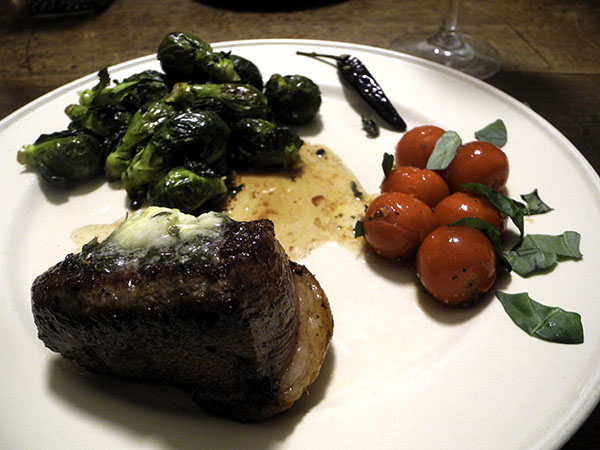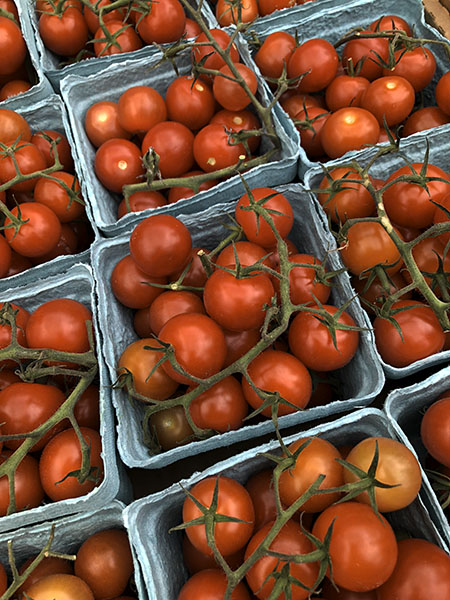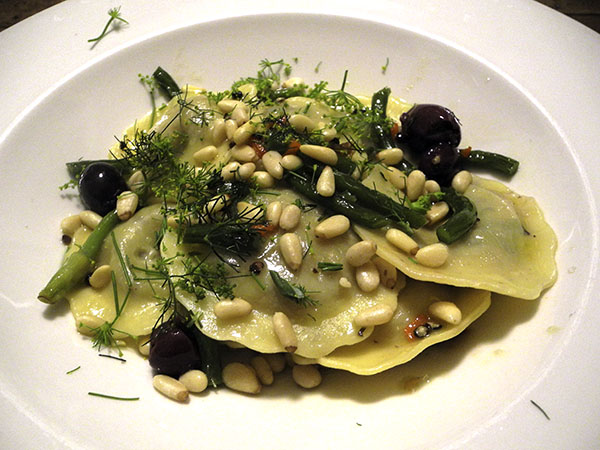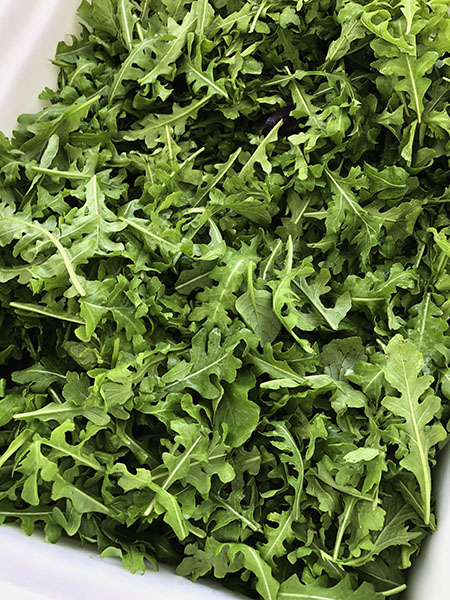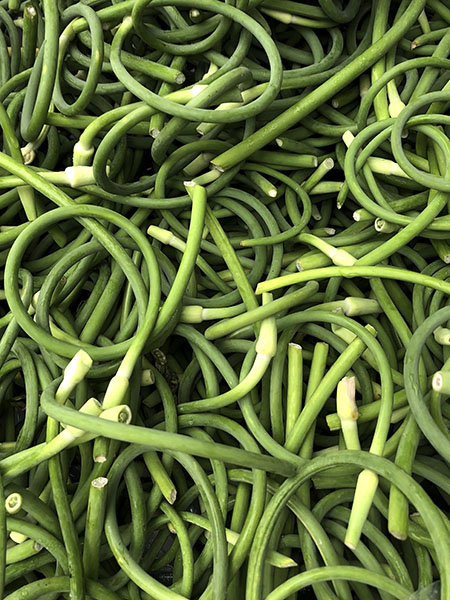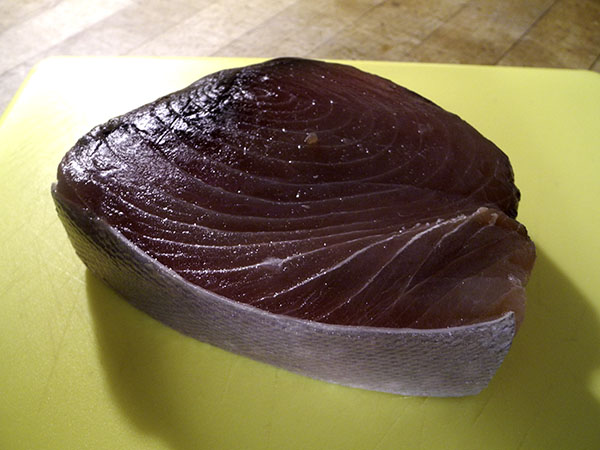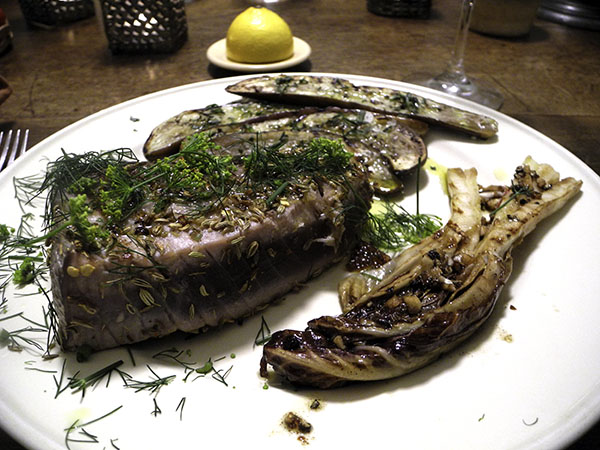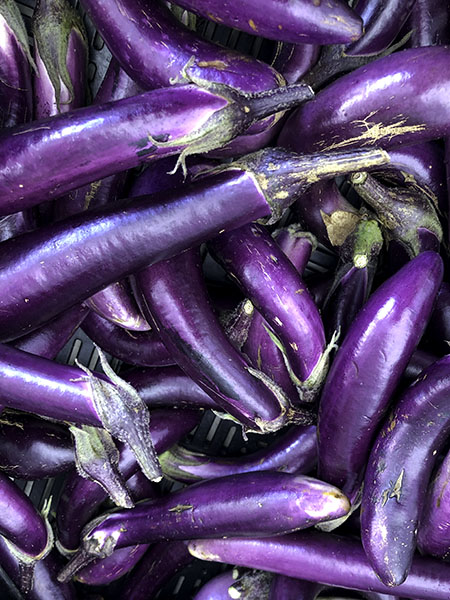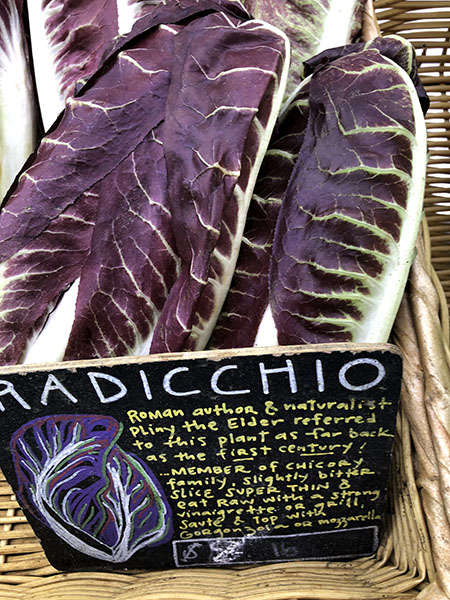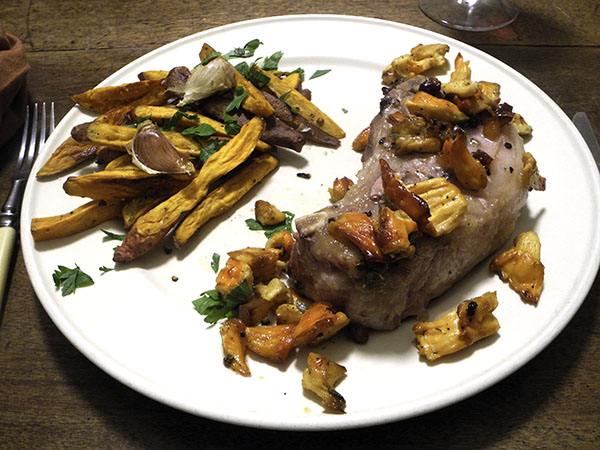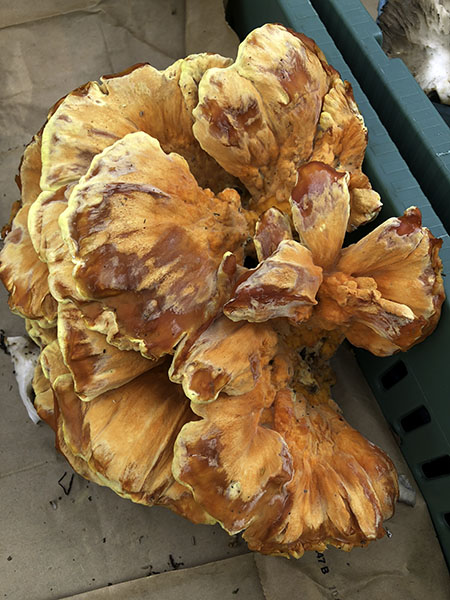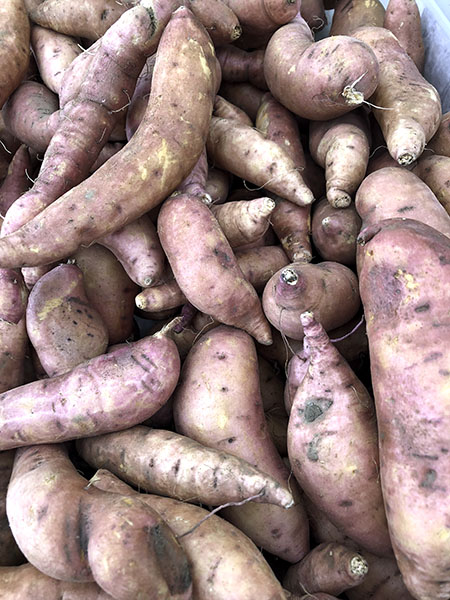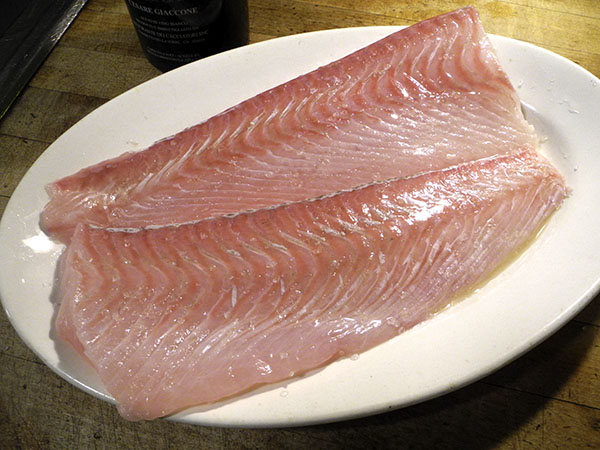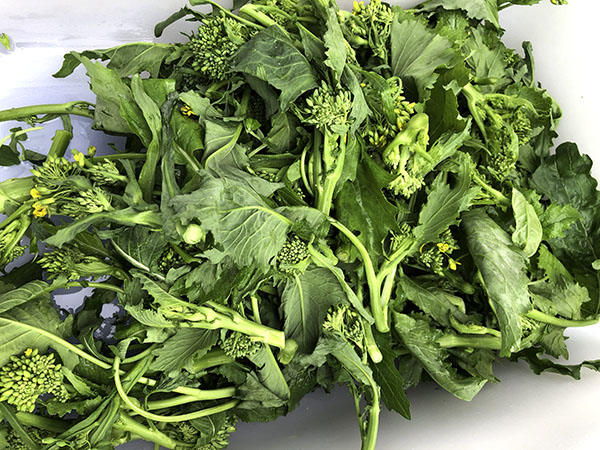
I think that simple assemblages of a good fresh or dry pasta and good ingredients, sometimes, but not necessarily always fresh ingredients, are among the most satisfying meals of all, in the preparation and in the eating, and this was one of the best.
It’s the sort of meal that asks for no real skill, no precise ingredients, no strict amounts, no fat wallet, no long preparation, no strictures on hotness, and neither meat nor fish.
The quality of the ingredients is the one essential, and, along with several other choice bits, this dinner benefited from these beauties:


- almost 9 ounces of Afeltra 100% Grana Italiano Penna di Rigata [sic] from Naples via Eataly Flatiron, cooked al dente, drained, then tossed into a large heavy antique high-sided copper pot in which less than one-inch-long sections of 4 garlic scapes from Berried Treasures Farm had been slowly heated in flavored cooking fats reserved from the preparation of the previous day’s meal (a bit of roughly-chopped rocambole garlic and thin scallion, both from Keith’s Farm, that had been heated in a little Whole Foods Market Portuguese house olive oil and a bit of Organic Valley ‘Cultured Pasture Butter’ until softened) adding a little additional olive oil, straight, until the scapes had begun to soften, then 5 or 6 thinly-sliced, very pungent yellow seasoning peppers (I’ve forgotten their proper name) added to the pot and stirred, and about 3 quarters of a cup of reserved pasta cooking water gradually added, stirred over a fairly high flame until the liquid had emulsified, seasoned with sea salt, and 14 of “the best cherry tomatoes” from Stokes Farm, halved, slipped into the mix and stirred with the pasta before some torn leaves of Gotham Greens Rooftop, basil from Whole Foods were added, the pasta arranged inside shallow bowls, olive oil drizzled around the edges, scattered with more basil before some Sini Fulvi Pecorino Romano D.O.C. from Whole Foods Market was grated on top of everything
- the wine was an Italian (Veneto) white, Il Conte, Pinot Grigio 2017 from Flatiron Wines

- the music was Vivaldi’s gorgeous 1740 opera, ‘L’olimpiade, Rinaldo Alessandrini conducting Concerto Italiano (my favorite part of the synopsis is the part that says that because the hero has no chance of winning the olympics, and therefore the grand prize, the hand of his secret beloved, he asks his friend to compete disguised as him, with no explanation of how a guy can disguise himself so if he’s required to run naked)
[the last image, of a 5th century BC Olympiad depicted on a black figure vase, is from a review of Pergolesi’s ‘L’Olimpiade’, with the same Metastasio libretto Vivaldi used, as did some 50 other composers]





